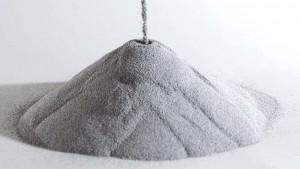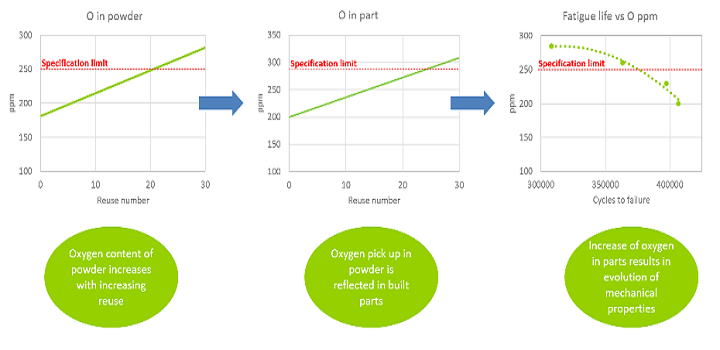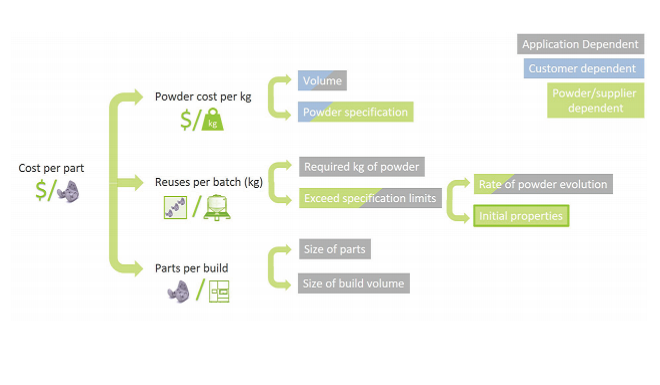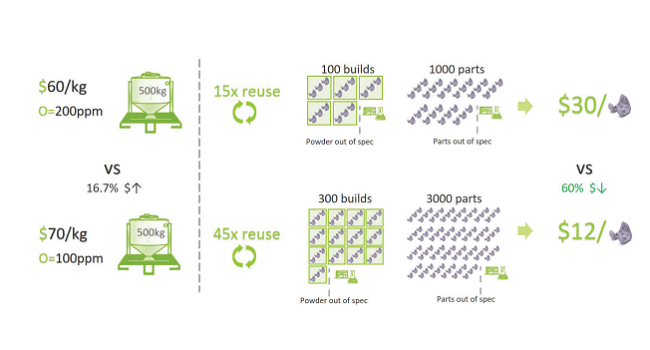 UK-based metal 3D printing powder company LPW Technology is on a mission to add high quality to AM processes with its well-defined powders and services, and increase adoption of metal 3D printing. Two years ago, the company introduced a new materials process, and has worked to develop more environmentally friendly metal powders for 3D printing.
UK-based metal 3D printing powder company LPW Technology is on a mission to add high quality to AM processes with its well-defined powders and services, and increase adoption of metal 3D printing. Two years ago, the company introduced a new materials process, and has worked to develop more environmentally friendly metal powders for 3D printing.
LPW aims to make the highest quality metal powder for the 3D printing market, which means material that performs reliably, consistent supply, and complete traceability; the latter two are controlled by optimized manufacturing methods, well-known supply chains, and good Quality Management Systems. But, when it comes to material that performs well, that all depends on the properties of the powder. According to LPW, the old adage ‘buy cheap, buy twice’ still applies to AM.
The company recently completed a case study, titled “Metal AM- IN718 powder cost vs reduced cost per part,” that explains why it has confidence in the commercial reuse of its Inconel 718 metal 3D printing powders.
“One of the key benefits of AM, over conventional manufacturing methods, is the ability to reuse a batch of material which has been through the process,” LPW wrote in the case study. “The business case for reusing powder is strong, the more times you can reuse a batch of powder the lower the final cost per part is, on the basis of less powder ‘wasted’. The number of times a material can be reused is often determined by the user, or a perceived industry standard, but either way material performance in delivering as-built parts is typically the key metric.”
 Several things can influence the final cost per part, including material, which is often considered the most expensive factor in terms of continuing production. But, by reusing 3D printing powder, the final cost per part won’t necessarily reflect the initial cost per kilo of the material. Other factors that influence this cost include how many parts can be produced in each build, and how many viable builds a manufacturer can complete from one batch of powder.
Several things can influence the final cost per part, including material, which is often considered the most expensive factor in terms of continuing production. But, by reusing 3D printing powder, the final cost per part won’t necessarily reflect the initial cost per kilo of the material. Other factors that influence this cost include how many parts can be produced in each build, and how many viable builds a manufacturer can complete from one batch of powder.
“The number of parts produced in a single build is entirely application specific and depends on the size of the part and the size of the available build volume,” LPW explained in the case study. “The number of builds that can be completed for a single batch is dependent on how quickly the powder breaches the specification limits. At this point we must consider the influence of powder evolution, how a material varies from initial specification.”

Figure 2 – Evolution of oxygen content in powder and part, and influence on mechanical properties of Inconel 718.
As shown in the figure above, and demonstrated by companies like LPW, metal powder can evolve with reuse. A powder’s oxygen concentration can increase linearly with the number of time it’s reused, which is reflected in the final 3D printed parts. In terms of Inconel 718 specifically, it could potentially influence a component’s dynamic mechanical performance. The company showed that a 50 ppm oxygen content increase was indeed enough “to significantly reduce the fatigue life of the material at elevated temperatures.”
“Where this linear relationship is demonstrated, it is logical that starting with a virgin powder with lower oxygen levels will allow more builds to be completed before the specification limit is reached,” LPW wrote in the case study.
Metal AM powder’s oxygen levels are mainly controlled by the levels of oxygen in the feedstock material, along with the gas purity and process parameters during atomization. This is why it’s usually more expensive to make powder with low oxygen levels. But, while some may believe this means it’s more cost-effective to use less expensive powder with a higher oxygen content, this is only an accurate assumption is one doesn’t think about reusing the powder.
“Figure 3 compares the total cost of ownership of two batches of Inconel 718 powder,” the case study reports. “The first batch has an oxygen content of 200 ppm (0.02 wt%), with a cost of $60 per kg. The second has an oxygen content of 100 ppm (0.01 wt%) with a cost of $70 per kg – a 16.7% increase, which for large batch sizes represents a significant material cost.”
While the second batch is more expensive per kg, it’s also 100 ppm lower in oxygen levels. LPW’s case study determined that it’s possible to triple the number of reuses with the lower oxygen powder if a modest oxygen evolution rate of 3.5 ppm per build is applied to a material specification limit of 250 ppm. So, even though there’s a 16.7% increase in the cost of material, the 60% reduction in final cost per part from using the more expensive, lower oxygen content powder makes it worth the while.
So high quality material, in addition to providing optimal results from single use, can also be used to extend the powder’s commercial and specification life. As LPW put it, gaining the confidence to reuse metal 3D printing powder has completely changed the metal 3D printing business case landscape.
Discuss this story and other 3D printing topics at 3DPrintBoard.com or share your thoughts in the comments below.
[Images: LPW Technology]Subscribe to Our Email Newsletter
Stay up-to-date on all the latest news from the 3D printing industry and receive information and offers from third party vendors.
You May Also Like
3D Printing Unpeeled: New Arkema Material for HP, Saddle and Macro MEMS
A new Arkema material for MJF is said to reduce costs per part by up to 25% and have an 85% reusability ratio. HP 3D HR PA 12 S has been...
3D Printing News Briefs, January 20, 2024: FDM, LPBF, Underwater 3D Printer, Racing, & More
We’re starting off with a process certification in today’s 3D Printing News Briefs, and then moving on to research about solute trapping, laser powder bed fusion, and then moving on...
3D Printing Webinar and Event Roundup: December 3, 2023
We’ve got plenty of events and webinars coming up for you this week! Quickparts is having a Manufacturing Roadshow, America Makes is holding a Member Town Hall, Stratafest makes two...
Formnext 2023 Day Three: Slam Dunk
I’m high—high on trade show. I’ve met numerous new faces and reconnected with old friends, creating an absolutely wonderful atmosphere. The excitement is palpable over several emerging developments. The high...

































